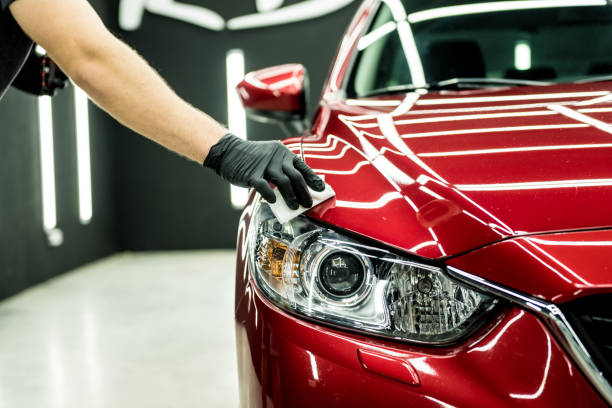Whether you are an experienced or novice car owner, imagine your car shining in the sun and the paintwork giving off a beautiful shine that makes people stop and stare. You don’t need to hire a professional beautician to get such a beautiful look; you can do it yourself if you know how. This guide explains in detail how to wax your own car, including the best waxing methods, the most common mistakes to avoid, and the satisfying results of doing it yourself.
1. Right wax
Before you start waxing, it’s important to understand the different types of car waxes on the market. From natural waxes to man-made polymers, each type has its own unique properties. When making your choice, consider factors such as how long the product will last, how easy it is to use and how shiny you want it to be.
Get what you need
Before you start, gather what you need to wax your car. To make this process work, you will need good quality wax, an applicator, and a microfiber cloth. Make sure the product you choose is suitable for your car and can be easily found in a car store or online.
2. Prepare your car
When you wax your car, it’s like taking it to a spa. First, wash and dry your car to remove dirt and other debris. This keeps the surface clean and allows the wax to adhere better and therefore work better. Take this step slowly; paying close attention will be worth it in the end.
3. Application method
The most fun part now is the waxing. Use an applicator or foam pad to apply the wax in small, circular motions. Be consistent and ensure even coverage over the entire surface. This step is very important to achieve a showroom-worthy shine.
4. Buffer and shine
Once the wax has dried to a mist, it’s time to sand it away. For larger surfaces, use a high-quality microfiber cloth or electric buffer. Take your time and enjoy the process. The goal is to show off the glossy finish underneath.
5. Common mistakes
Waxing your own car can be fun and rewarding, but it can also be difficult. Don’t make common mistakes like applying too much wax, not properly preparing the surface, or polishing too hard. If you want a smooth, successful waxing experience, avoid these mistakes.
How often do you wax?
The frequency of waxing depends on many factors, such as the weather, how often the wax is used and the type of wax used. For optimal protection, wax your car approximately every three to six months. Regular waxing not only ensures that the shine is maintained, but also protects it against external factors.
6. Benefits of waxing your own car
In addition to being aesthetically pleasing, waxing your car yourself is an inexpensive way to keep your car in good condition. Investing time and effort into improving the appearance of your car is worth it and will give you a sense of pride and satisfaction.
7. Professional DIY waxing
Professional detailing services have their benefits, but many car enthusiasts prefer to wax their car because they can do it themselves. It gives you a personal connection with your car and helps you learn more about car maintenance. Consider the pros and cons and discover what suits you and your lifestyle best.
8. Your money safe
Regular waxing isn’t just for appearance; This is also good for the life of the car. The wax forms a barrier that protects the paint from UV rays, harsh weather conditions and other factors that can damage the paint. It’s kind of like a shield for a car’s laser armor.
About the environment
For those who care about the environment, there are some eco-friendly laundry options. Consider using a natural or water-based wax that is better for the environment while still providing good protection and shine. Waxing your own car is an option that is good for the environment and your car.
User review
Listen to what those who have tried waxing their cars have to say, not just what we have to say. These people’s stories show how satisfying and proud it is to work from home on a professional level. Join the group of DIY enthusiasts and enjoy beautifying your car.
FAQs
1. How often should I wax my car?
Frequency depends on factors such as weather and usage, but generally this should be done every three to six months.
2. What type of wax can I use on my car?
Each type of wax has a different purpose. When choosing the right wax for your car, consider factors such as longevity and shine.
3. Does DIY waxing take long?
Although it takes a lot of time and effort, the satisfaction of a job well done makes it all worth it.
4. What is the difference between natural wax and artificial wax?
Typically, natural waxes provide a deeper shine, while synthetic polymers provide longer protection.
5. Are there environmentally friendly types of wax?
Yes, eco-friendly car owners can choose between water-based wax or wax made from natural ingredients.

